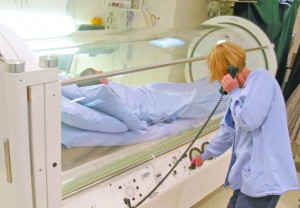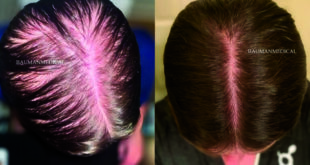By Sarah Crane
 Not many people wake up in the morning wondering how they are going to heal a skin graft or flap, especially once it has medically failed. Traditional wound care treatment would suggest replacing the graft (a sort of second attempt), hoping that, this go around, it doesn’t fail. After all, our typical response if something doesn’t work is: “Replace it.” We’ve become so complacent in relying on replacements that, in general, we aren’t as resourceful as we once were — when your car doesn’t work, you take it to the shop, and they replace the broken part. There’s a certain mysticism in automotive mechanics—we never quite know how they fix our cars; they just do fix them. There is a similar mysticism in medicine: we never quite know how doctors fix our broken bodies; they just do fix them most of the time.
Not many people wake up in the morning wondering how they are going to heal a skin graft or flap, especially once it has medically failed. Traditional wound care treatment would suggest replacing the graft (a sort of second attempt), hoping that, this go around, it doesn’t fail. After all, our typical response if something doesn’t work is: “Replace it.” We’ve become so complacent in relying on replacements that, in general, we aren’t as resourceful as we once were — when your car doesn’t work, you take it to the shop, and they replace the broken part. There’s a certain mysticism in automotive mechanics—we never quite know how they fix our cars; they just do fix them. There is a similar mysticism in medicine: we never quite know how doctors fix our broken bodies; they just do fix them most of the time.
This article is designed to help educate physicians on the medical uses of hyperbaric oxygen therapy, indicating how failed skin grafts and flaps can be healed—not by pharmaceuticals, but with a completely natural, organic medicine. Sounds too good to be true, doesn’t it? —The answer is: oxygen.
Yes, that’s right: Oxygen. Now, that’s not to say that you can drive up to a local oxygen bar, take a few puffs, and have a cured skin graft. Like every doctor or mechanic, the proper tools are required. The tool that is best used to administer pure oxygen is a hyperbaric chamber. The word association most people will report when prompted with “chamber” is “metal,” which does not sound like a pleasant experience at all. While it’s true that all hyperbaric chambers have some metal components, there are some chambers that are not made of metal—in fact, the areas patients recline in are made of Plexiglas. You can recline on a padded bed and watch your favorite TV show while experiencing hyperbaric oxygen therapy. Now that we’ve demystified the tool, let’s explore the process and why hyperbaric oxygen therapy helps heal skin grafts…
Skin grafts can fail for several reasons, but the most common cause is hypoxia (i.e., a lack of oxygen). Hypoxia can result from several issues: previous radiation to the area, restricted circulation due to diabetes, certain infections, nutrition, age, or smoking. Additionally, the graft itself is stripped of all blood and oxygen before it is applied. Oxygen is not restored to the graft until new capillaries adhere it to the host body and allow circulation.
Hyperbaric oxygen therapy helps heal skin grafts by supplying the host wound area with oxygen. Coupled with the pressurized environment that hyperbaric oxygen therapy embraces as its administration method, the oxygen-rich environment helps skin grafts heal by executing three actions:
◊ Hyperbaric oxygen therapy reduces edema. A reduction in edema results in reduced amounts of swelling. Importantly, as this post-surgery swelling is decreased, the amount of space between the host site and skin graft is reduced, making it easier for oxygen to travel from the body into the skin graft.
◊ Hyperbaric oxygen therapy introduces hyperoxygenation. This mechanism increases the oxygen tension between the skin graft and host body, which makes the plasma more effective. (Note. It does not increase the plasma, but just makes the plasma at the skin graft site work better.) Once the oxygen tension levels reach a certain tipping point, additional cellular mechanisms are activated or increased: macrophage migration, proline synthesis, and neovascularization (i.e., the growing of new vascular systems and angiogenesis).
◊ Hyperbaric oxygen therapy decreases reperfusion injury when neovascularization starts. If blood is reintroduced too quickly into areas where blood flow was either previously restricted or devoid, it can damage the frail capillary networks in these tissues. This kind of damage is called “reperfusion injury.” Therefore, it is important to limit the amount of damage that can occur when blood flow is reintroduced. If (Read the previous benefit of hyperbaric oxygen therapy to understand what triggers neovascularization.)
Skin grafts and flaps are a relatively taboo topic; they aren’t what people think about when they wake up in the morning. However, it is important to know how to help skin grafts and flaps before they fail, because it is possible to regenerate them with a truly natural medicine.
Check Also
WHAT IS MY CIRCADIAN RHYTHM AND WHY DOES IT MAKE ME FEEL SO “OFF”
By Renee Chillcott, LMHC Have you heard terms such as “biological clock” or “biorhythms”, or …
 South Florida Health and Wellness Magazine Health and Wellness Articles
South Florida Health and Wellness Magazine Health and Wellness Articles




